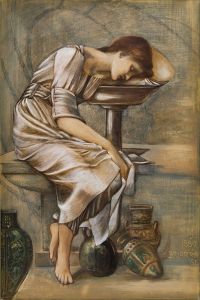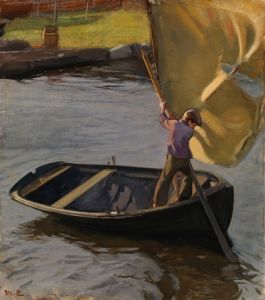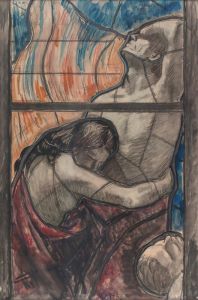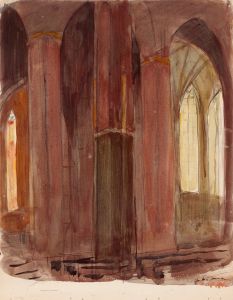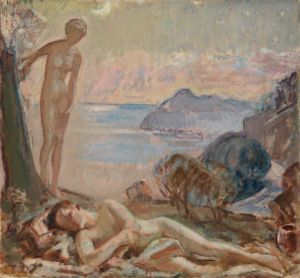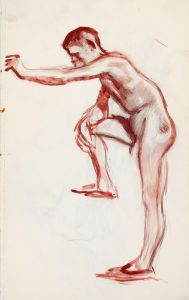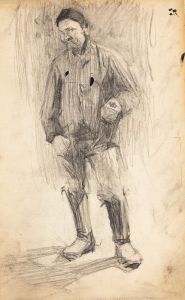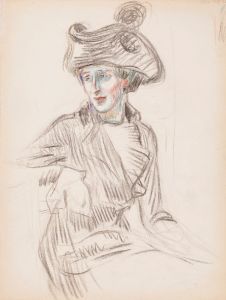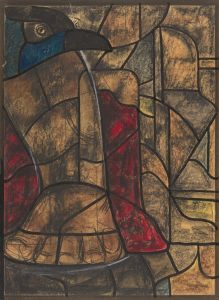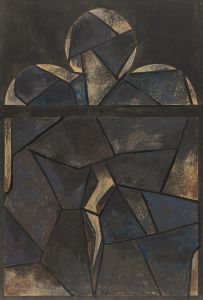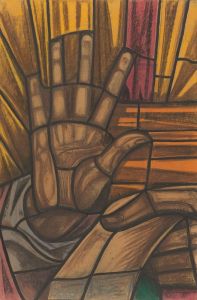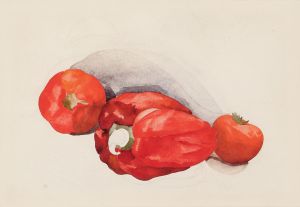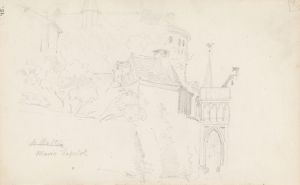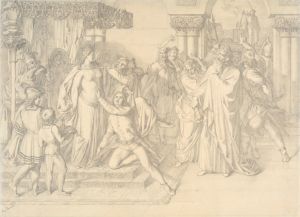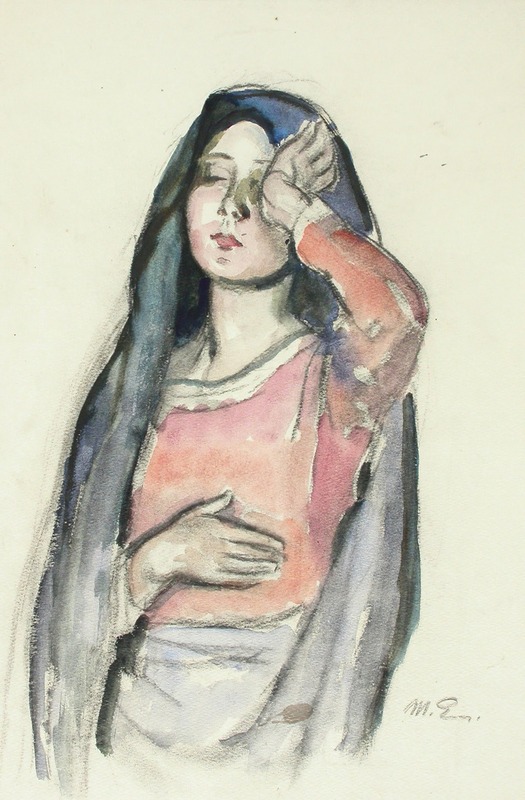
Mary, sketch for the stained glass window Ave Maria in Pori Church
A hand-painted replica of Magnus Enckell’s masterpiece Mary, sketch for the stained glass window Ave Maria in Pori Church, meticulously crafted by professional artists to capture the true essence of the original. Each piece is created with museum-quality canvas and rare mineral pigments, carefully painted by experienced artists with delicate brushstrokes and rich, layered colors to perfectly recreate the texture of the original artwork. Unlike machine-printed reproductions, this hand-painted version brings the painting to life, infused with the artist’s emotions and skill in every stroke. Whether for personal collection or home decoration, it instantly elevates the artistic atmosphere of any space.
Magnus Enckell's "Mary, sketch for the stained glass window Ave Maria in Pori Church" is a preparatory work created by the Finnish symbolist painter Magnus Enckell (1870–1925). This sketch was part of the artist's design process for the stained glass window titled "Ave Maria," which is located in the Central Pori Church (Keski-Porin kirkko) in Pori, Finland. The church, a prominent neo-Gothic structure completed in 1863, is known for its artistic and architectural significance, and Enckell's contribution to its interior decoration is considered a notable example of Finnish ecclesiastical art.
Magnus Enckell was a leading figure in Finnish art during the late 19th and early 20th centuries. He is particularly associated with the Symbolist movement, which emphasized themes of spirituality, emotion, and the inner world. Enckell's work often explored religious and mythological subjects, and his involvement in the design of stained glass windows reflects his interest in creating art that harmonizes with sacred spaces.
The "Ave Maria" stained glass window, for which this sketch was made, depicts the Virgin Mary in a serene and contemplative pose, embodying themes of purity and devotion. The sketch itself provides insight into Enckell's creative process, showcasing his use of soft lines and delicate color palettes to convey a sense of reverence and tranquility. While the final stained glass window is a collaborative work, with the actual glasswork executed by skilled artisans, Enckell's design serves as the foundation for the composition and overall aesthetic.
The stained glass window was completed in 1925, the same year as Enckell's death, making it one of his final contributions to Finnish art. It remains a significant feature of the Central Pori Church, admired for its artistic quality and its ability to enhance the spiritual atmosphere of the space. The sketch, as a preparatory work, holds historical and artistic value, offering a glimpse into the meticulous planning and artistic vision that went into the creation of the final piece.
Enckell's work on the "Ave Maria" window is part of a broader tradition of integrating fine art into ecclesiastical settings, a practice that gained prominence in Finland during the late 19th and early 20th centuries. His contribution to the Central Pori Church reflects both his personal artistic style and the broader cultural and religious context of the time. Today, the sketch and the completed stained glass window are appreciated as important examples of Finnish Symbolism and ecclesiastical art.





